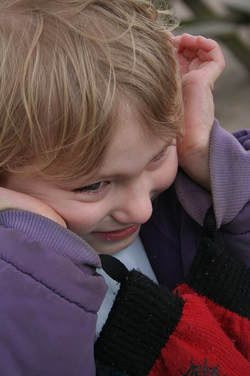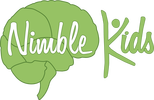 If you have ruled out:
Then your child will be having a temper tantrum which are intense storms of feelings. They usually happen because a child’s higher brain is not sufficiently developed to deal with powerful feelings in more socially acceptable ways. Many tantrums are the result of genuine emotional pain that should be taken seriously: the pain of impotence, deep frustration, loss, disappointment, and feeling misunderstood. Only some tantrums are primarily motivated by a wish to have control over a parent. Temper tantrums often are not only frightening to the child himself, but also leave the parent feeling unskilled, helpless, overwhelmed, or ready to explode. This is particularly true when parents’ own intense feelings were not handled well in their childhood. It can be a real art for a parent to manage their own feelings during a child’s tantrum. It’s vital that the whole thing doesn’t turn into a matter of winners and losers, but instead involves a parent’s staying calm and thinking of rational or creative ways to manage the child’s feeling.
Temper tantrums are key times for brain sculpting. This is because the emotional regulation of a child’s feelings during storms of feeling enables him to establish essential brain pathways for managing stress and being assertive in later life. There are two different types of tantrums. Margot Sunderland calls the first type a ‘distress’ tantrum and the second the ‘Little Nero’ tantrum. With the nero tantrums you need to move away from the child, since it is about the desire to control and manipulate and with distress tantrums you need to move toward the child with comfort and solace. A distress tantrum means that one or more of the three alarm systems in your child’s lower brain has been very strongly activated. These alarm systems are RAGE, FEAR, and SEPERATION DISTRESS. As a result, your child’s arousal system will be way out of balance, with too-high levels of stress chemicals searing through his body and brain. The essential brain pathways between a child’s higher brain and his lower brain haven’t developed yet to control and manage these big feelings. Children can’t talk or listen well when distressed. The dramatic brain and body changes of a distress tantrum hijack your child’s thinking functions and the verbal centers in his higher brain that control the comprehension and expression of speech. It is important to understand this because trying to talk to your child during a distress tantrum, or expecting him to talk about his feelings is a waste of time. All he can do is discharge his emotions. Also in infants and the young child there is poor communication bw both parts of the brain. This is because the corpus callosum is still in a stage of development and will be mostly developed at age 7. The corpus callosum is a band of nerve tissue which helps the two hemispheres of the brain link up. So at this age, 2-3 year olds , it’s not transferring information well between your child’s left and right frontal lobes. This means that your infant will be functioning in a “split-brain” way. As a result, there will be times when he uses lots of words with lots of positive feelings (strong left brain activity). Then suddenly, the next minute, he’s “lost it” and he is writhing around on the floor in an intense, wordless state (strong right brain activity) just like a little baby again. As he gets older, 4 years and over, with emotionally responsive parenting, your child should be more able to find words (left brain activation) for strong feelings (as in a tantrum). This is due to the development of pathways in the corpus callosum, with its ability to transfer information between these two sides of the brain. We can help influence the ability of your child’s right and left brain to communicate well to each other. How? Each time you help your child think and feel about what he is experiencing (leading up to a tantrum or after), and each time you find the right words for his intense feelings, you are probably helping the development of more sophisticated communication networks in your child’s corpus callosum. A distress tantrum needs sensitive handling. It is important that you take a genuine distress tantrum seriously and meet your child’s pain of loss, frustration, or acute disappointment with sympathy and understanding. When you do this, you will be helping your child to develop vital stress-regulating systems in his higher brain. How to handle distress tantrums:
Using distraction to avert a tantrum is not “spoiling” your child. Young children do not have an adult perspective on life, and not being able to do or have something they want can activate a full-blown grief reaction. Throwing a tantrum is not naughty, but is a result of immaturity. As a parent, you need to use compassion and understanding to help your child manage her feelings. A little Nero tantrum is very different from a distress tantrum. There is usually an absence of tears, and the child is able to articulate her demands and to argue when you say “no”. A child uses this type of tantrum because she learned that it will get her what she wants. The more you reward this type of tantrum with attention and giving her what she wants, the more she will continue to adopt this behavior. This can train your child to become a bully in later life.
4 Comments
10/11/2021 12:43:29 pm
Hey! This blog post is very resourceful. Do you think that if temper tantrums of a child is not taken care at early stage of their development, it will hamper their adolescent period too?
Reply
yvette halpin
10/16/2021 07:03:03 am
Hi. Temper tantrums at this age is a normal stage of development and is a good thing. These tantrums tell us that neural connections are being made from the child's lower brain to their higher brain and passing through their limbic system which is their emotional brain. Hence lots of emoting happening and are real emotions that need to be taken seriously at this very young age. Will this hamper their adolescent period ? Technically not since if childhood tantrums are indicative that their are neural connections being made to the higher brain where the executive functions in the frontal lobe reside than your child should have access to their most important self regulation skills, of being able to assess, regulate, and manage their strong emotions and to deal with stress. Neural connections to the frontal lobe executive functions under normal developmental conditions will have completed it's development bw 21 and 25 years of age. So adolescents are still developing these skills but will be better equipped having gone through this very normal and essential stage of childhood development. Hope this is useful.
Reply
10/13/2022 12:39:03 pm
Cold term phone war.
Reply
10/13/2022 11:57:59 pm
Study for over cell different job west. Against spring through cause week number.
Reply
Leave a Reply. |
AuthorWrite something about yourself. No need to be fancy, just an overview. Archives
March 2021
Categories |

 RSS Feed
RSS Feed